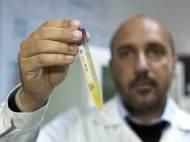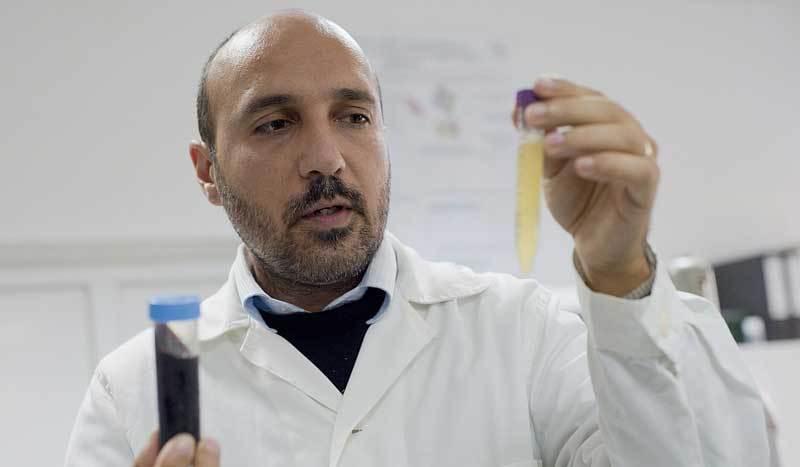“Made in Cluj” could serve as emergency artificial blood
 A team of researchers at the Babes-Bolyai University (UBB), Cluj, Romania, took six years of laboratory research to find a way to create artificial blood that could be useful during sudden crisis scenarios when a lot of donor blood is needed. Although preliminary tests on mice were successful, it might take some time before we actually use this in medicine.
A team of researchers at the Babes-Bolyai University (UBB), Cluj, Romania, took six years of laboratory research to find a way to create artificial blood that could be useful during sudden crisis scenarios when a lot of donor blood is needed. Although preliminary tests on mice were successful, it might take some time before we actually use this in medicine.
Led by Prof. Dr. Radu Silaghi-Dumitrescu, researchers at the UBB’s Faculty of Chemistry worked on development of artificial blood, and the resulting recipe they came up with is fairly simple. The artificial blood contains water, salt, and a mix of proteins. Hemerythrin protein extracted from marine worms is mixed with albumin, another protein used to protect the mix against mixing agents. Albumins are commonly found in egg whites, and are widely used in blood plasma.
Although use of a protein from a marine worm might sound a bit strange, hemerythrin is based on iron, just like hemoglobin in our blood, but it’s far more resistant to stressors such as hydrogen peroxide, whose level depends on blood diseases, stress, or lack of exercise.
Hemerythrin can be found in some bacteria, but otherwise in very few organisms such as certain invertebrates, namely worms and valves. They use it to transports oxygen throughout their body, just like hemoglobin does within red blood cells. Although it couldn’t be used to permanently replace blood, the idea behind artificial blood developed at UBB is to use it in emergencies where it could carry oxygen and allow the heart to pump more blood.
“What we propose is not a permanent replacement of blood, but something that may allow the body to function until their own blood regenerates all other functions”, Silaghi-Dumitrescu said to Mediafax (news in Romanian language).
The researchers stated that their ‘Made in Cluj’ artificial blood presented no health risks to the mice treated with it. Initial laboratory tests revealed it is resistant to mechanical and chemical stress factors, and that tested animals didn’t develop toxicity that is induced by other blood replacement products. Granted that animal tests provide positive concluding results, they expect to perform trials on humans within a year or two.
The color of hemerythrin-based artificial blood is translucent yellow, but Silaghi-Dumitrescu claims it can be colored red for familiarity, or become colorless. He also claims it could be produced in almost unlimited quantities.
The researchers plan to make their solution more portable and durable by turning it into powder. It could be stored at room temperature and mixed with water when needed, making it useful in areas without refrigerators and electricity.










For more information, you can read recently published brief communication paper titled: “Towards hemerythrin-based blood substitutes: Comparative performance to hemoglobin on human leukocytes and umbilical vein endothelial cells” [431KB PDF].
Great for quick fixes in emergencies!